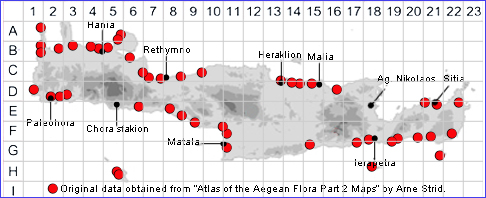SPECIES DESCRIPTION
MEDICAGO MARINA
Family and Genus:- See- LEGUMINOSAE/Subgen. CYMATIUM
Common Name:- Sea medick
Homotypic Synonyms:- Medica marina, Medica maritima.
Meaning:- Medicago (Gr) Median-grass, A name used by the Greek physician
and botanist Dioscorides, from a Persian name for lucerne, or medick.
Marina (L) Marine, growing by or in the sea.
General description:- Perennial with a long, tough taproot and creeping rhizomes.
Stems:-
1) 10-30 cm, procumbent, whole plant densely whitish-tomentose.
Leaves:-
1) Leaflets, 4-10 x 3-6 mm, obovate-cuneate, truncate, obscurely dentate at the
apex.
Flowers:-
1) 5-12 in short-pedunculate, capitate racemes.
2) Corolla, 7-10 mm, bright yellow.
Fruit:-
1) Legume, with 3-5 rather loose coils, subglobose to shortly cylindrical, 6-8 mm in
diam., truncate at both ends, villous, with short, distant spines ± concealed by
the dense wool.
Key features:-
1) Legume, with a strong submarginal vein, or with a wide veinless border, with a
distinct hole through the centre.
2) White-tomentose perennial.
Habitat:- A typical species of sandy beaches, with Calystegia soldanella, Cyperus
capitatus, Euphorbia papalias etc., rarely in ruderal habitats a short distance
inland.
Distribution:- Throughout Greece. - Shores of the Mediterranean region, SW
Europe and the Black Sea. Fairly widespread and along the coastal areas of Crete.
Flowering time:- Late Mar to June.
Photos by:- Steve Lenton

